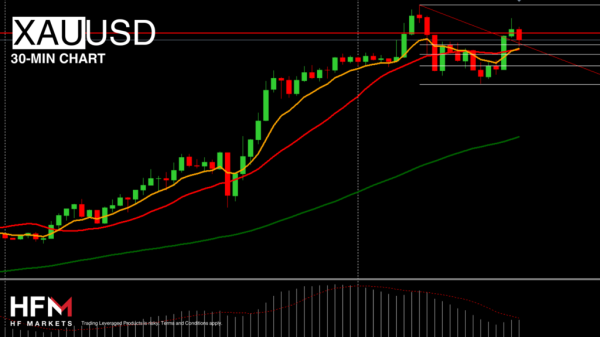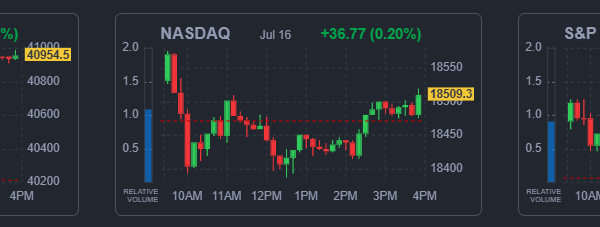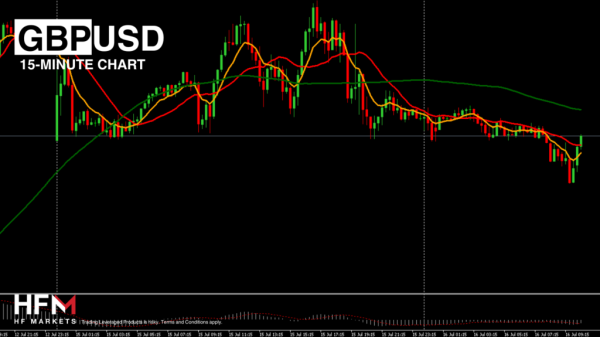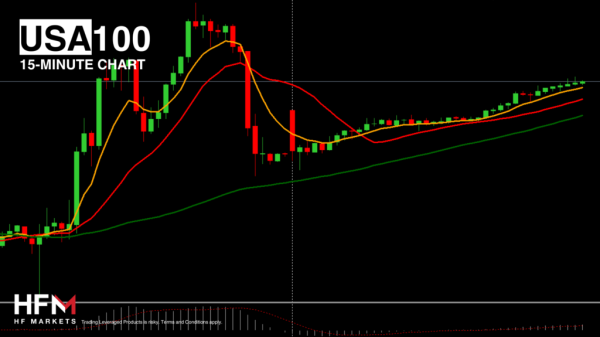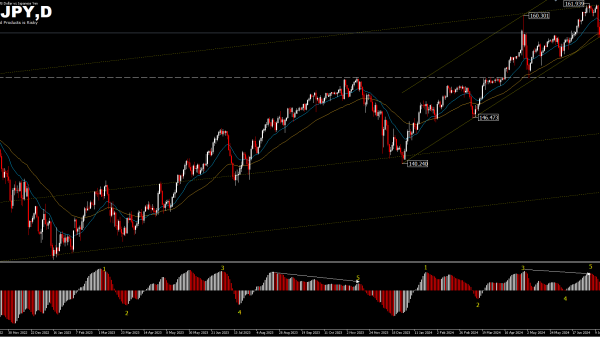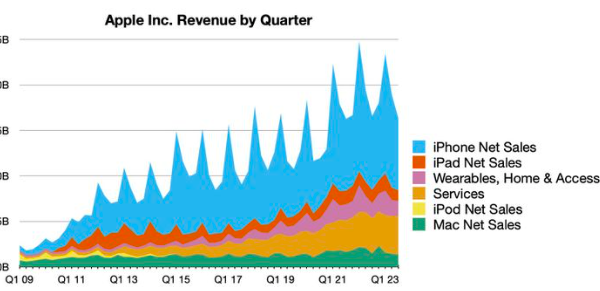By re-centering their positions, traders can benefit from the inherent profit associated with being long gamma and continuously re-hedging their delta exposure.
The primary purpose of gamma scalping is to offset the effects of daily decreasing theta, which represents the cost associated with maintaining a long options position. As the value of theta consistently depreciates daily, traders buy and sell shares of the underlying stock to minimize any negative impact.
By understanding the relationship between an option’s gamma and delta, traders can better predict how fluctuations in the underlying stock may affect the option’s price and use this knowledge to their advantage when implementing a gamma scalping strategy.
Historically, gamma scalping has been considered a commission-heavy strategy due to the constant trading required. However, with advancements in technology and the availability of increasingly affordable trading platforms, this technique has become more accessible to a broader range of investors interested in maximizing profits and mitigating risks. Nonetheless, a thorough understanding of the options market and the intricacies of gamma scalping is essential for successfully implementing this advanced trading strategy.
Fundamentals of Gamma Scalping
Gamma scalping is an advanced option trading strategy that focuses on profiting from the changes in an option’s delta as the underlying’s price fluctuates. To understand the concept of gamma scalping, one needs to comprehend option greeks, how gamma is defined, and the concept of a delta-neutral strategy.
Option Greeks
Option Greeks quantify the sensitivity of options prices to various factors. The four main greeks are Delta, Gamma, Vega, and Theta. Each of these greeks measures the change in an option’s price due to changes in underlying price, volatility, time decay, and interest rates, respectively. Understanding the options Greeks is crucial because they offer insights into crucial aspects of options trading, like risk management and optimal hedging strategies.
Gamma Definition
Gamma measures the rate of change in an option’s delta concerning the change in the price of the underlying asset. Essentially, it reflects how much the option’s delta will change if the underlying asset’s price moves by $1. Gamma is highest at the money and decreases as the option moves further in or out of the money. As an option trader, being long gamma means profiting from the changes in delta as the underlying’s price fluctuates.
Delta Neutral Strategy
A delta-neutral strategy aims to create a position with a total delta of zero. This means that any gains or losses from fluctuations in the underlying instrument’s price are offset by changes in the options position. Gamma scalping usually starts with a delta-neutral position.
One common delta-neutral strategy is the long straddle, where an investor purchases a call and a put option with the same strike price and expiration date. Since the call has a positive delta and the put has a negative delta, the combined position’s total delta will be close to zero.
As the underlying’s price changes and the delta changes, a trader can perform gamma scalping by adjusting the hedge to maintain the delta-neutral position.
Implementing Gamma Scalping
Gamma scalping is an options trading strategy used to offset the theta decay on a delta-neutral long options trade. Its primary aim is to take advantage of changes in the underlying asset’s price by utilizing the spot market for immediate delivery (Smart Capital Mind, InvestingFuse). Here are the sub-sections involved in implementing gamma scalping:
Choosing the Right Options
Selection of appropriate options is crucial to implementing a successful gamma scalping strategy. Traders should look for options that offer a high gamma and a low theta, as these will provide the greatest profit potential when adjusting positions in response to changes in the underlying asset’s price.
Entry and Exit Points
Traders need to determine suitable entry and exit points for their gamma scalping trades. Entry points are generally based on factors such as implied volatility, market conditions, and price movements of the underlying asset. Exit points, on the other hand, are established when the profit target is reached or if the position becomes too risky to maintain.
Position Adjustments
As the underlying asset’s price fluctuates, traders must continuously adjust their gamma scalping positions to maintain a delta-neutral stance. This process, known as dynamic hedging, involves buying and selling the underlying asset to offset changes in the option position’s delta (Ticker Tape).
By carefully selecting options, defining entry and exit points, and regularly adjusting positions, traders can effectively use the gamma scalping strategy to offset potential losses due to theta decay on delta-neutral long options trades.
Advantages and Disadvantages Of Gamma Scalping
Profit Potential
Gamma scalping can offer significant profit potential for traders. It enables them to capitalize on small price movements in the underlying asset, which can lead to multiple profit-making opportunities in a short period. However, the profit potential is not without risks, as mentioned below.
Risk Management
Managing risk is an essential aspect of any trading strategy. With gamma scalping, traders can potentially neutralize their portfolio’s price risk, as explained in this Quora post. Nevertheless, the strategy also comes with risks associated with large market moves, as outlined in this Seeking Alpha article. Traders need to be aware of these risks and utilize appropriate risk management techniques to safeguard their capital.
Time and Effort
Gamma scalping can be a time-consuming strategy, as it often requires traders to monitor the markets closely and make frequent adjustments to their positions. This can be both mentally and physically taxing. Furthermore, it may not be suitable for traders with limited time or those who prefer a more hands-off approach to trading. However, for traders who are committed to mastering the strategy, the potential rewards can be worth the effort.
Application in Different Market Scenarios
In this section, we’ll explore how gamma scalping can be applied in various market scenarios, including trending markets, flat markets, and during changes in volatility. Understanding how this strategy functions in different conditions can help traders make informed decisions and optimize their risk management.
Trending Markets
In trending markets, where a clear uptrend or downtrend is present, gamma scalping can be an effective way to profit from price fluctuations. During an uptrend, traders can long gamma by buying at-the-money call options, whereas in a downtrend, they can short gamma by buying at-the-money put options.
As the market moves in the expected direction, traders can dynamically adjust their positions by buying or selling the underlying instrument, thus locking in profits through delta hedging. Gamma scalping can be particularly beneficial when the trend is strong and the position’s gamma becomes increasingly positive.
Flat Markets
Flat, or range-bound markets, are where gamma scalping truly shines as a potentially profitable strategy. In these scenarios, the underlying instrument’s price remains relatively stable, with minimal fluctuations or sideways movement. Traders can sell options, particularly straddles or strangles, to benefit from the lack of price movement. By gamma scalping, they can adjust their positions and take advantage of the small price changes to accumulate profits. Scalping gamma in a flat market requires close monitoring and quick position adjustments to ensure the option’s delta remains neutral.
Changing Volatility
Gamma scalping can also be employed when market volatility is changing. Since gamma is directly influenced by volatility, traders can use this strategy to capitalize on anticipated increases or decreases in volatility. They can buy options with higher implied volatility if they expect it to rise or sell options with lower implied volatility if they believe it will decrease. With gamma scalping, traders can manage their positions dynamically, adjusting to changes in the market’s volatility and capturing profits from the corresponding price movements. This strategy can be particularly useful for traders with a keen understanding of market volatility and its potential impact on option prices.
Conclusion
Gamma scalping is a sophisticated options trading strategy employed primarily by institutions and hedge funds. It entails adjusting one’s delta exposure by buying and selling shares of stock incrementally to maintain a delta-neutral position. This approach exploits the inherent relationship between gamma and theta in options trading, capitalizing on short-term price fluctuations.
The success of gamma scalping lies in the trader’s ability to balance these two option Greeks. Careful monitoring of market movements and timely adjustments to their position is crucial to profit from this strategy. It is essential to note that gamma scalping is not for every trader, as being actively involved in the market and having a deep understanding of options theory is required for success.
In summary, gamma scalping can provide a lucrative opportunity for experienced traders who are well-equipped to navigate its intricacies. The strategy requires dedication and a keen understanding of the options market, but it holds the potential for significant profits if executed correctly. Prospective gamma scalpers should thoroughly educate themselves on the subject and consider the inherent risks involved before diving into this complex trading approach. About the Author: Chris Young has a mathematics degree and 18 years finance experience. Chris is British by background but has worked in the US and lately in Australia. His interest in options was first aroused by the ‘Trading Options’ section of the Financial Times (of London). He decided to bring this knowledge to a wider audience and founded Epsilon Options in 2012.
Subscribe to SteadyOptions now and experience the full power of options trading at your fingertips. Click the button below to get started! Join SteadyOptions Now!
Related articles:
Options Delta Explained: Sensitivity To Price Options Theta Explained: Price Sensitivity To Time Options Gamma Explained: Delta Sensitivity To Price Options Vega Explained: Price Sensitivity To Volatility Options Rho: Sensitivity To Interest Rates














